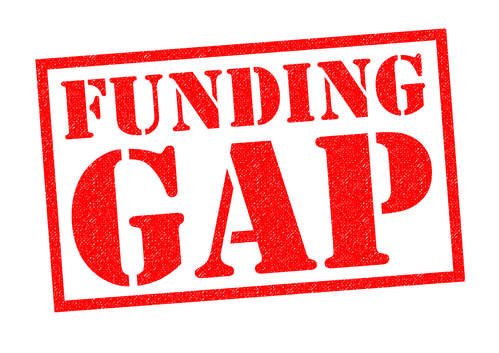A recent issue brief prepared by the Pew Charitable Trusts (Pew) reports that most state pension plans are significantly underfunded and that, for many, the funding gap is growing. [See "The State Pension Funding Gap: 2016. Investment shortfalls, insufficient contributions reduced funded levels for public worker retirement plans (Pew, April 12, 2018)]. Pew, founded in 1948, is an independent non-profit organization that strives to inform the public and improve public policy by providing useful data and analysis to illuminate issues and trends that shape our world.

The findings and conclusions in Pew's issue brief are based on financial data Pew collected on over 230 state pension plans from fiscal year 2000 through fiscal year 2016, the most recent year for which comprehensive financial data were available for all 50 states. Significantly, Pew found that, in 2016, the state pension plans had aggregate pension liabilities of $4 trillion, but assets of only $2.6 trillion, meaning there was a cumulative 2016 deficit of $1.4 trillion! Worse, the 2016 cumulative deficit reflects a $295 billion increase over the 2015 cumulative deficit, and the 15th annual increase in cumulative state pension debt since 2000.
Pew attributes the widening and worsening funding gap to primarily two factors: (1) investment performance falling short of expectations, and (2) insufficient contributions to the plans. For 2016, the median investment-return assumed by state plans was 7.5%, but their actual median investment-return was only about 1%-a whopping 6.5 percentage point difference! This investment-return disparity contributed $146 billion to the 2016 deficit. Another $138 billion of the increased 2016 deficit was the result of some states lowering their investment-return assumptions.
Even if state pension plans had met their 2016 median investment-return assumption of 7.5%, Pew explains that their overall funding gap would have INCREASED by $13 billion because they did not make sufficient contributions to their plans. They would have needed to contribute $109 billion to pay for new benefits and interest on pension debt. However, they contributed only $96 billion-a $13 billion shortfall in contributions (and that's assuming they met their 7.5% investment-return assumption, which they did not).
Although Pew predicts that strong investment returns in 2017 will likely decrease the overall state pension funding gap for that year, Pew cautions that the 2018 investment markets have been volatile and that even a small reduction in projected investment return will significantly increase plan liabilities. For example, when Pew used a 6.5% investment-return assumption, instead of the median assumed return of 7.5%, the total 2016 liability for state pension plans increased from $4 trillion to $4.4 trillion, which, in turn, increased their overall deficit from $1.4 trillion to $1.7 trillion.
Pew notes that new accounting rules will also play a role in assessing state pension plan liabilities. Under those rules, plan assets are reported using market values, rather than the traditional approach of using "smoothed" values which spread gains and losses over time. If the market values are lower than the smoothed values, the new math will show increased plan liabilities and larger funding gaps.
State pension plans have also been investing in riskier assets the past 20 years because they have the potential of generating higher investment returns. [Some underfunded private-sector plans have adopted this same investment approach.] However, this strategy could backfire and spell disaster for these plans if there is a significant downturn in the market of more than short duration.
While funding measures examine a plan's long-term balance sheet, Pew advises that policy makers should also consider a plan's current cash flow because it can provide an early warning of illiquidity and insolvency risk, especially for state pension plans in severe financial distress. To improve current cash flow and close or reduce funding gaps, Pew suggests that state pension plans (1) adopt strong contribution policies, (2) carefully manage investment risk, and (3) avoid unfunded benefit increases. Unfortunately, most state pension plans have not adopted these strategies.
According to Pew's data for the 2016 year, the best funded state pension plans were New York, Wisconsin, South Dakota, and Tennessee, which were each funded at over 90%. Twelve states, however, were funded at less than 60%: Colorado, Minnesota, Illinois, Mississippi, Kentucky, Pennsylvania, South Carolina, New Hampshire, Massachusetts, Rhode Island, Connecticut, and New Jersey. Tied at the very bottom were Kentucky and New Jersey, which were funded at only 31%, followed by Illinois at just 36%.
The numbers are scarey. We can only hope that policy makers in at least the most distressed states will take action soon to adopt responsible strategies to fund their pension plans while ensuring secure but affordable benefits--rather than continuing to kick the can down the road. I'm not holding my breath though.
To read more of my pension posts, please go to my Facebook Page "Pension Justice 4 You" and if you like it, click the Like and Follow buttons and share the Page (or any Posts on it) with your Friends!
No Comments
Leave a comment